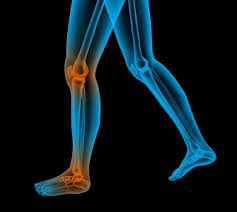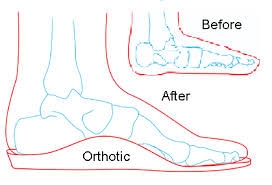Flat feet, also called pes planus in medical terms, is used when a person has fallen arches, low arches, or no arches at all. Patients should be aware, that unless they are experiencing any type of foot, ankle, knee, or leg pain, treatment is usually not necessary.
Two types
Flexible Flat Foot: foot retains motions and arch is able to be recreated when weight or pressure is not placed on foot
Rigid Flat Foot: “stuck” in flat position regardless of whether pressure or weight is placed on foot.
Causes
Flat feet is completely normal in infants and toddlers. The condition is caused by loose tendons holding the joints in the foot together. By the time the child reaches the age of 3, an arch will usually develop, some people may not form arches.
- Stretched or torn tendons
- Broken or dislocated bones
- Nerve Problems
- Genetic
- Leg Length Inequality
Symptoms
Most people who have flat feet do not experience pain or other problems. Symptoms that are experienced include:
- Easily tired feet
- Pain near arches and heels of feet
- Back and leg pain
- Inside bottom of feet becomes swollen
- Foot rolls inwards(overpronates)
- Ankle pain
- Pain after activity-such as running or walking
When to see a Podiatrist
A visit to the Podiatrist is necessary if flat feet symptoms are interfering with physical comfort or athletic activities. A podiatrist will first look to see if an arch on your feet exists as you stand on your toes. If arch does exist, you will not need treatment for flat feet.The doctor will order tests such as X-rays and scans to observe bones and tendons in the feet.
Treatment
Treatment for flat feet depends on severity of the pain. Options include a list that will accommodate each patient according to their diagnosis.
Simple Treatments Patients can do:
- Lose weight
- Wear proper supportive shoes
- Wear shoes with wide toe box
- Wear shoes with cushion
- Daily stretching
- Soak/Massage feet for pain
Non-Surgical Treatments a Podiatrists can add:
- Anti-inflammatory medication
- Shoe inserts
- Orthotics(arch-support): readjusts where weight is placed on feet
- Strapping
- Protective Pads: prevents irritation with shoes
- Physical Therapy
Most cases of flat feet do not cause problems and are painless. The treatment options will vary between each patient. If treatment does not work, surgery may be needed to relieve pain in rare cases. A general handout and guide for those with flat feet in available in Podiatric Care section from the Krames Patient Education website.


